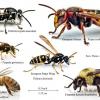I use:
- Boring stuff: Gmail, safari, google maps, facebook, twitter, weather, camera, calender, clock, music, my bank's app...
- Transport stuff: One that reads the GPS's on the trams and displays the timetables. One that displays the train timetables. One to book a taxi.
- An app to order food delivered from restaurants.
- Some news apps, that just display specific websites in a better format. They could've just made a mobile friendly version of their site though...
- Dropbox, SVN/Git log viewers, SSH.
- A "scanner" app, which takes photos of paper/whiteboards but filters them to look like scans instead of photos.
- A video app that downloads/caches VOD's while I'm on WiFi so I can watch them on the train later, where my 3G connection cuts in and out.
- Some fitness apps that tell me how many calories I've eaten and how far I've walked.
- A light meter app, which uses the camera to emulate a digital light meter.
There's a lot of 'sensors' in a smartphone - 6/8/9 are using these sensors in ways other than the obvious (taking photos, telling you where you are, etc). There's probably some other devices that you could emulate with them. You could even build something like this, which let's someone with their phone strapped to their arm 'feel' the magnetic field through vibration 
5 are just ports of existing tools.
7 is just an extension of an existing idea, but with some caching etc bolted on for usefulness. There's probably lots of other existing ideas that can be augmented like this.
2/3/4 are kind of tied to existing services, and are probably well covered by other app authors.
the first time I ever had access to Adobe Illustrator I remember being blown away by it.
I remember when "playing on the computer" meant opening up the office suite's painting app,
which was about as good as mspaint 












